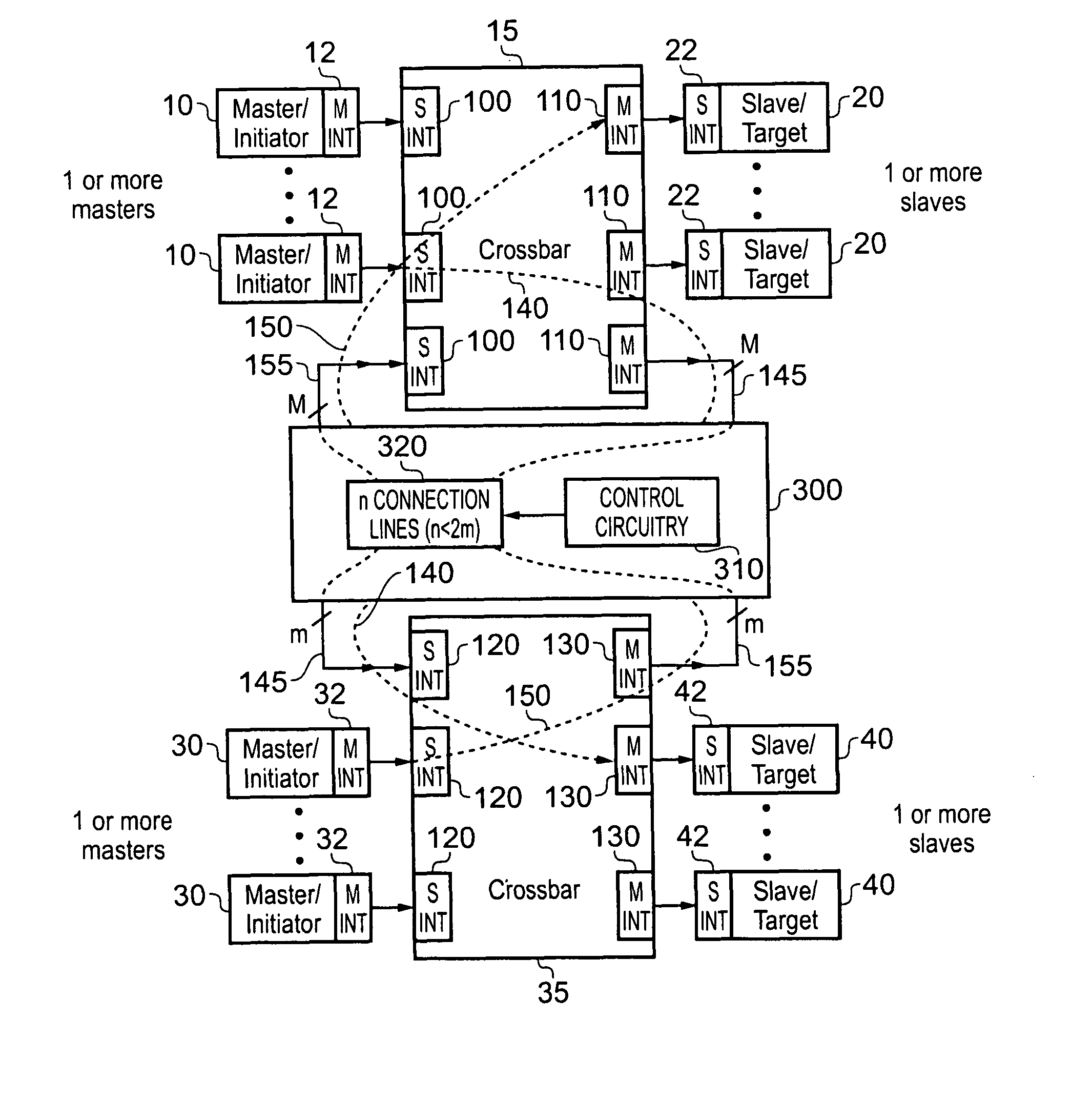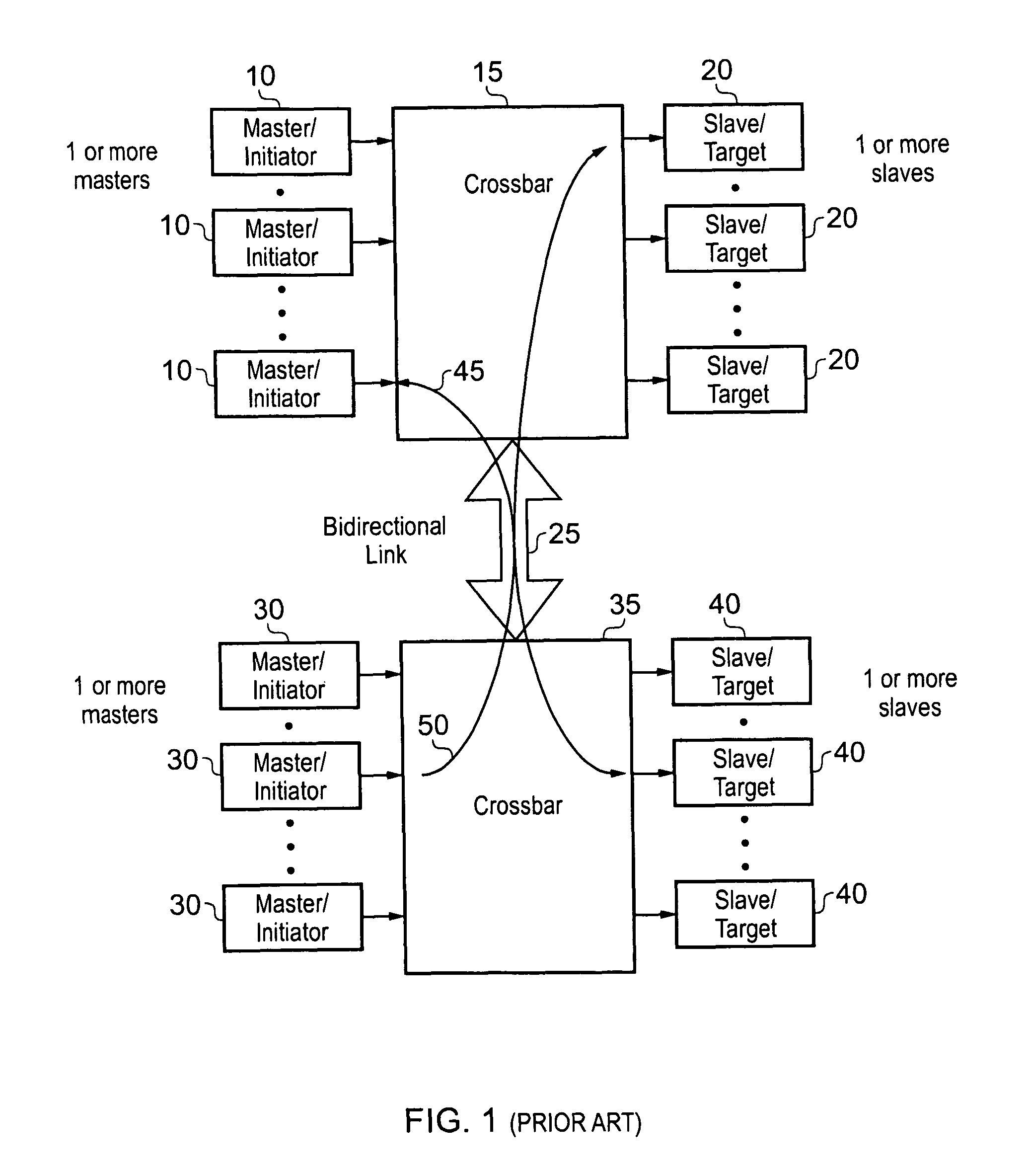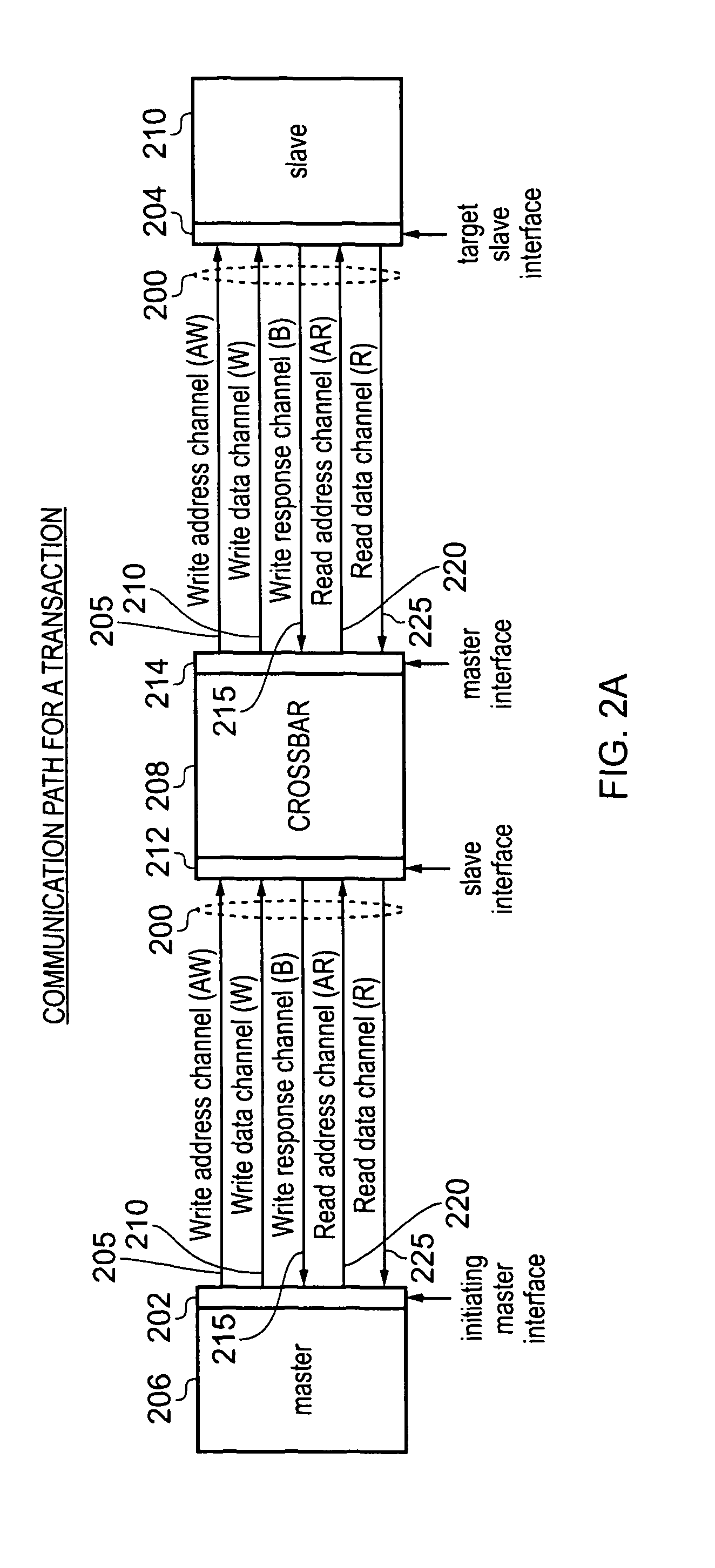Communication infrastructure for a data processing apparatus and a method of operation of such a communication infrastructure
a technology for data processing apparatuses and communication infrastructures, which is applied in the direction of electric digital data processing, instruments, etc., can solve the problems of increasing energy dissipation, requiring more silicon area, and adding cost and complexity to the design, so as to reduce latency and overall system complexity, the effect of reducing the number of connection lines
- Summary
- Abstract
- Description
- Claims
- Application Information
AI Technical Summary
Benefits of technology
Problems solved by technology
Method used
Image
Examples
Embodiment Construction
[0058]FIG. 5 is a block diagram illustrating a communication infrastructure in accordance with a first embodiment. Those elements which are the same as the elements discussed earlier with reference to FIG. 3 are labelled with the same reference numerals. As with the FIG. 3 example, the communication infrastructure comprises a first crossbar circuit 15 coupled to a second crossbar circuit 35 via a bidirectional link. The crossbar circuits may be on different chips or provided within the same chip. Instead of the simple bidirectional link 25 discussed earlier with reference to FIG. 3, in the embodiment shown in FIG. 5 the bidirectional link 300 is provided. The bidirectional link 300 still provides a first communication path 145 from an internal master interface 110 of the first crossbar 15 to an internal slave interface 120 of the second crossbar 35, and a second communication path 155 from the internal master interface 130 of the second crossbar 35 to the internal slave interface 10...
PUM
 Login to View More
Login to View More Abstract
Description
Claims
Application Information
 Login to View More
Login to View More - R&D
- Intellectual Property
- Life Sciences
- Materials
- Tech Scout
- Unparalleled Data Quality
- Higher Quality Content
- 60% Fewer Hallucinations
Browse by: Latest US Patents, China's latest patents, Technical Efficacy Thesaurus, Application Domain, Technology Topic, Popular Technical Reports.
© 2025 PatSnap. All rights reserved.Legal|Privacy policy|Modern Slavery Act Transparency Statement|Sitemap|About US| Contact US: help@patsnap.com



